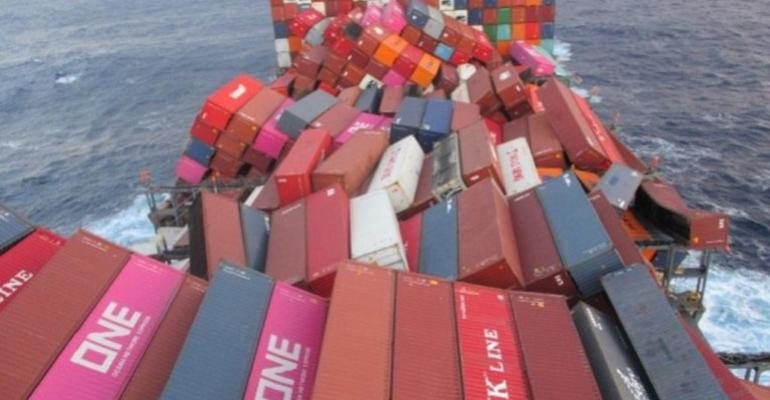The Containers Lost at Sea 2023 update showed 661 containers were lost in 2022, down from over 2,000 in 2021 and almost 4,000 in 2020.
While the 2022 figure is not the lowest recorded in the report’s 15-year history, WSC noted that it did represent the lowest losses as a percentage of total containers transported at 0.00026%.
The historical data of lost containers shows peaks and troughs over the past 15 years, with some years marked by much higher losses related to individual container ship casualties and events. The year with the highest losses was 2013 due to the MOL Comfort losing 4,293 boxes; 2020 saw 1,800 containers lost in severe weather from ONE Opus and another weather event led to the loss of 750 containers for Maersk Essen in 2021.
The average annual loss over the 15-year survey period was around 1,566 containers, with an average of 2,301 over the past three years.
Losses for individual WSC members were mostly single digit in 2022, said WSC, with only two carriers reported losses of over 100 containers.
"The reduction in containers lost at sea in 2022 is positive news, but there is no time for complacency. Every container lost at sea will always be one too many and we will continue with our efforts to make the sea a safer place to work, and to protect the environment and cargo by reducing the number of containers lost at sea,” said John Butler, President & CEO of the WSC.
One of the initiatives aimed at reducing container losses is the MARIN Top Tier Study, of which WSC is a partner. Entering its third year, the project has identified parametric rolling as a particular risk to container ships. Training materials and tools have been created to highlight the risk of such rolling, and further work is underway into container and lashing gear strength, guidelines for vessel operations, optimizing stowage and voyage planning, and what additional measures should be recommended.
WSC stressed the shared responsibility for container safety across the supply chain, with multiple parties responsible for checking the condition of a container along its journey. Shippers, packers and forwarders are responsible for packing, bracing and stowing of contents as well as verifying gross mass and contents declarations. Terminals and stevedores have a responsibility in proper handling and stowing, while vessel operators are responsible for safe stowage plans, stowage monitoring, safely securing containers and segregating containers where necessary.
The latest edition of the Containers Lost at Sea report is the first annual update; the last update covered two years and prior editions covered three. The increased frequency of reporting is a response to higher container losses in 2020-2021.
WSC members represent 90% of global vessel container capacity, and figures are adjusted upward on the assumption that losses for the remaining 10% of the fleet are proportional to WSC members.
Copyright © 2024. All rights reserved. Seatrade, a trading name of Informa Markets (UK) Limited.
Add Seatrade Maritime News to your Google News feed.  |

